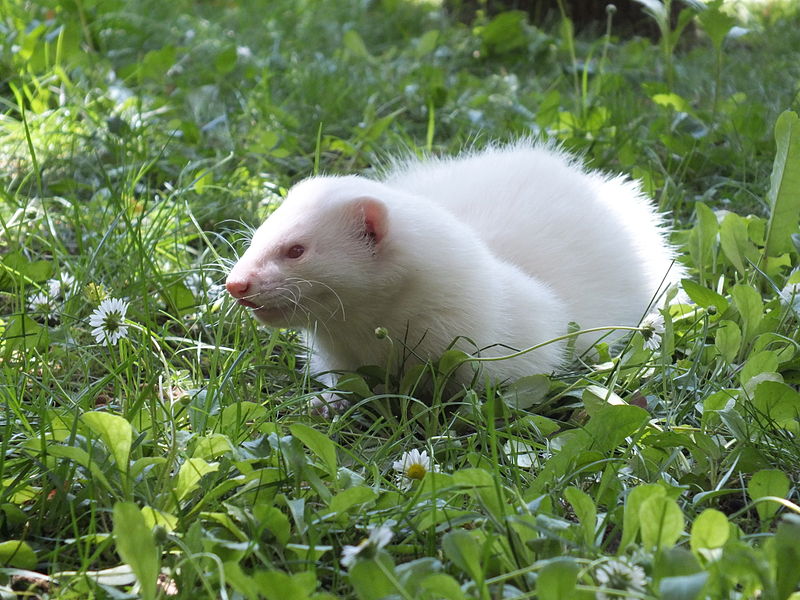Adaptation
 The domestic ferret,
Mustela putorius furo, is most closely
related to the black-footed ferret, M. nigripes, which is an
endangered species native to North America (Pathology of the
Domestic Ferret, 2012). It is also a close relative to the
Spilogale putorius, or the
Spotted Skunk. There are two common varieties among the
domestic ferrets that are based off of fur color. The most
common “fitch” ferret has a brown coat and a black mask-like
face, feet and tail, while the “English” or albino ferret has a
yellow-white coat and pink eyes (Pathology of the Domestic
Ferret, 2012).
The domestic ferret,
Mustela putorius furo, is most closely
related to the black-footed ferret, M. nigripes, which is an
endangered species native to North America (Pathology of the
Domestic Ferret, 2012). It is also a close relative to the
Spilogale putorius, or the
Spotted Skunk. There are two common varieties among the
domestic ferrets that are based off of fur color. The most
common “fitch” ferret has a brown coat and a black mask-like
face, feet and tail, while the “English” or albino ferret has a
yellow-white coat and pink eyes (Pathology of the Domestic
Ferret, 2012).
Domestic ferrets are naturally crepuscular animals, meaning that
they are usually most active during dusk and dawn. They sleep
for about eighteen to twenty hours at a time, and are active
for a few hours before going to sleep again. However, ferrets
often change their active times to when their owners give them
the most attention (Duda, 2003). Ferrets readily interact with
other animals such as cats and dogs, and can be taught tricks
and will respond to discipline. Also, they tend to urinate and
defecate in the same spot, so they can be taught to use a litter
box (Duda, 2003).
Male ferrets, called hobs, are much larger than their female
counterparts, called jills. Hobs usually weigh approximately
three to six pounds, while jills usually weigh around one to
three pounds (Pathology of the Domestic Ferret, 2012). Both,
however, are much smaller than the
Honey Badger, another mustelidae. Both
sexes experience a fluctuation in their weights when a change in
seasons occurs because subcutaneous fat accumulates in the fall
and is lost in the spring. Fur also undergoes seasonal changes
when ferrets molt in the early summer (Pathology of the Domestic
Ferret, 2012).
Domestic ferrets’ lifespans can range from six to ten years,
most commonly six to eight, but eight to ten years is not
unheard of (Duda, 2003). Some live for shorter amounts of time
due to diseases and disorders such as rabies, parasites, flus,
ringworm, and others (Pathology of the Domestic Ferret, 2012),
but usually pet ferrets are given the proper vaccinations and
care to prevent issues like these.